If you haven’t yet heard of Quinoa, you’ve been missing out on something special!
Quinoa is a flowering plant in the amaranth family native to the North-western part of South America, especially in the Andes of Bolivia, Peru, and Ecuador. It is intentionally grown as a crop for its edible seeds, which are jam-packed with fiber, protein, B vitamins, vitamin E, potassium, minerals, and every single amino acid you can think of. The amount of minerals that Quinoa seeds contain is generally a lot higher than most other grains, which makes it a real powerhouse and this is why it is widely known in the western world as a superfood.
What’s more, as a food it is super versatile! Like rice, you can use it for both sweet dishes and savory ones. From chocolate pudding to fudgy chocolate brownies, vanilla cakes to straight up quinoa pudding on the sweet side of things. And when it comes to savory dishes, the list is almost infinite. Think salads, breakfast pies, salted cumin quinoa cakes, BLT quinoa bowls, quinoa pancakes, soups, quinoa-stuffed peppers and squash dishes, and many more. You’ll find endless lists of recipes if you simply search on Google for ‘quinoa recipes’.
Easy Growing
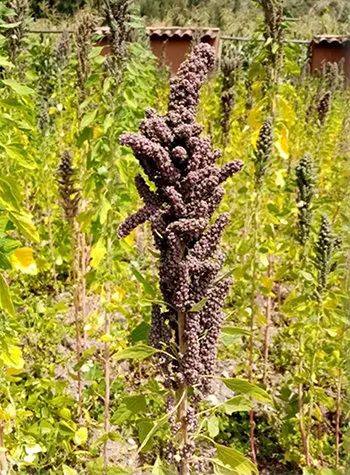 But what’s the very est thing about quinoa? It is easy to grow at home!
But what’s the very est thing about quinoa? It is easy to grow at home!
Unfortunately, a quinoa plant at a mature size measures 4ft in height, rendering it quite unsuitable as a container plant, unless you’re a master of large-pot planting and find a way to make it work.
The main thing for a successful grow is the quality of soil and the temperature of the environment in which it’s grown. If you have even a small vegetable or flower garden at home, it’s game on.
Quinoa is a very low-maintenance plant to grow and as long as you can meet certain growing criteria, doing so is a generally easy task.
It tends to germinate quickly and easily. And it is generally quite pest-resistant, too, although we’d recommend checking for pests that are specific to your specific geographical location.
In the past eight years, my wife and I have grown quinoa at home three times, and here’s what we’ve found.
First and foremost, it is absolutely beautiful to look at. See this photo which we took in our veg garden here at home where we live and grow our quinoa.
Related: Most Threatening Insects You Should Keep Away From Your Garden
Like Raising Children: More Work at First, Less Work Later
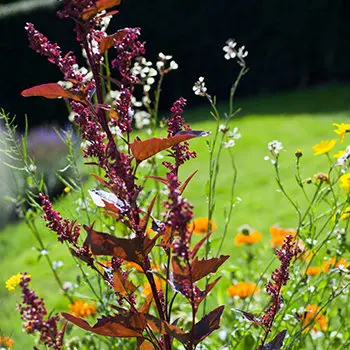 Keeping quinoa growth on track during its first days is the most challenging part. We had to be quite careful in the management of weeds in and around our quinoa plantation.
Keeping quinoa growth on track during its first days is the most challenging part. We had to be quite careful in the management of weeds in and around our quinoa plantation.
And there is one weed that is super similar in appearance to quinoa; it’s called lambsquarters.
Be very careful to make sure that you’re weeding out lambsquarters like the ones in this photo, and not your beloved quinoa plant! One trick to help with the weeding process is to sow amaranth cultivars with purple leaves. This simplifies weed identification.
Making sure that you plant the seeds in organised rows will also help on this front.
Whilst quinoa growth is a little slow at the start, it becomes easier and faster. Once the plants reach roughly one foot in height, the canopy closes inwards, weeds are shaded out, and less moisture is lost through evaporation, producing a much more speedy growth process.
When we grew quinoa for the first time, we were actually quite pleasantly shocked and surprised at the speed of growth beyond this stage of the process. Like all planting efforts, there are parallels with raising and tending to children!
The quality of their growth depends on our management and the attention and care we allow them.
For the smoothest of growing and germinating processes, make sure your soil stays within 60°F throughout the night. You can use a soil thermometer for such purposes. And if you don’t have a soil thermometer, or if you’re sure your soil will raise to more than 60°F through the night, one trick you can use is to refrigerate your quinoa seeds for a couple days before planting them.
Although quinoa is from relatively cold weather environments, it is most definitely a warm season crop. Therefore, when it comes to daytime temperatures, the plant will thrive most in soil temperatures of between 65°F and 75°F. For some parts of North America, this may mean avoiding planting the seeds until late May or early June.
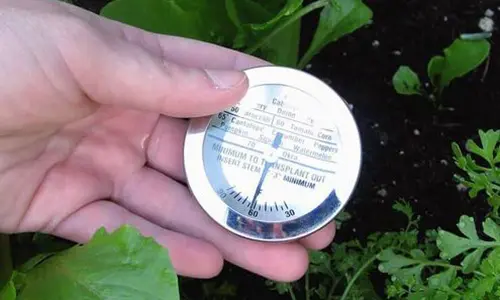
Quinoa’s Favorite Soil Type
In terms of soil type, you want to be planting in loamy, well-draining, fertile soil that has a pH of between 6 and 7.5.
Again, there are instruments you can use to measure this, such as soil strips or soil pH meters. There are multi-tools which will help you measure both the soil’s temperature and its pH levels. Be sure that the surface of your soil is finely prepared and has adequate moisture.
When it’s time to sow the seeds, do so no more than a quarter of an inch deep in rows that are separated by a distance of around 20 inches.
Ideally, if you use instruments such as a rototiller, you should be able to fit this between the rows of plants without doing any damage to the plants themselves. You can plant the seeds with a row seeder, or you can do what we prefer to do and sow them by hand. And eventually, you’ll need to thin the plants down, with a separation between plants of between 6 and 15 inches.
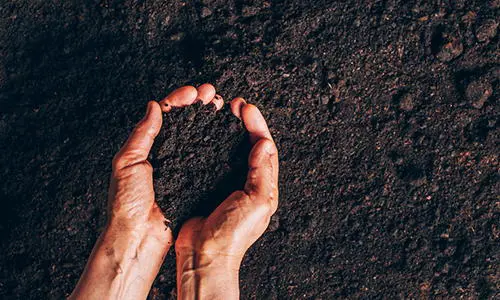
The great thing is that quinoa thinnings are a great addition to any salad dish, so the plant’s culinary contribution to your household begins way before the actual harvest! And if thinning is not your thing, since the seeds are small, you can significantly reduce thinning requirements by mixing the quinoa seeds with sand or radish seeds before sowing, as some people choose to do with carrots.
With enough moisture in the soil, no watering should be required until the plants have grown two to three leaves each. Keep your eye on this and keep checking the soil moisture throughout this process – especially when it’s your first time growing quinoa. Once you have a bit of experience, you’ll begin to get a better gauge of soil moisture during the planting and growing process.
The Challenge: Harvesting and Cleaning
Whilst the growing part is super easy beyond the initial weeding part, what’s a bit more labor-intensive are the harvesting and cleaning parts – although this shouldn’t necessarily be a dealbreaker for you!
If you allow the crop to dry on the stock, it means you can cut the plant from the stock and if you don’t have time for cleaning the grain immediately, you can easily store the dried plant on the stock.
When it’s time for cleaning the grain, however, your labor begins.
The grains are of course very small, much smaller than rice grains, for example. Picking the crop clusters from the stock of the plant and separating the grains from said clusters requires a lot of focus and can be quite time-consuming, too. Given the size of the grain, you’ll need a container of adequate size and small enough drainage holes (a food strainer with micro-sized drainage holes does the trick) to be able to separate plant matter from the actual grains before proceeding to fully wash the grain in order for it to be ready for human consumption.
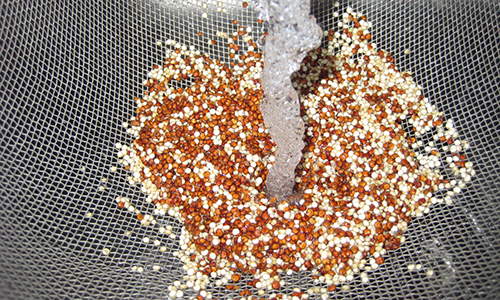
Our biggest recommendation if you are working by hand to cut grain clusters from the stock and separate other plant matter from the actual grains, is to do so as a team.
If you have a partner, children, friends, or other members of your family, it can be a nice little social event if you get together to share in the labors of lovingly preparing this amazing powerhouse of a grain for culinary preparation and consumption.
We have yet to discover a machine that assists in the harvesting and cleaning of quinoa grains, but if you find one, you may be able to significantly shorten the groundwork involved in this part of the production process.
You may also like:
How to Make Bark Bread from a Tree that Grows on Almost Every Street in America (Video)
Do You Have This Plant In Your Backyard?
200 Pounds Of Food You Can Harvest Only This Winter
9 Best Plants That Naturally Repel Pests from Your Homestead

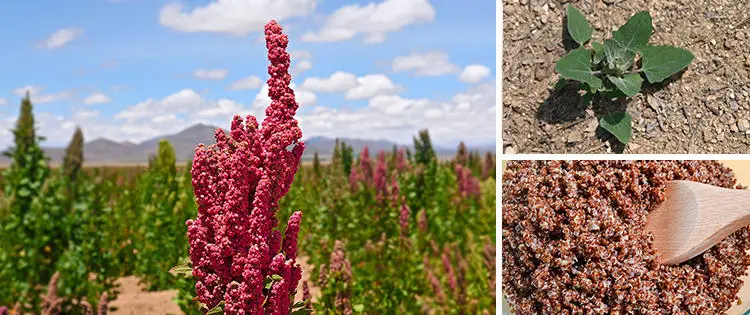
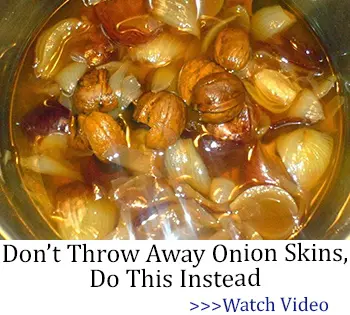













Just for the record, Lamb’s Quarters is a valuable edible plant in its own right, when you remove it from around the quinoa plants you can add it to salads also.
Yes, I agree with Judith. It gets such a crap rap all the time. We need more ♥ for lambs quarters! The article was great overall though thank you.